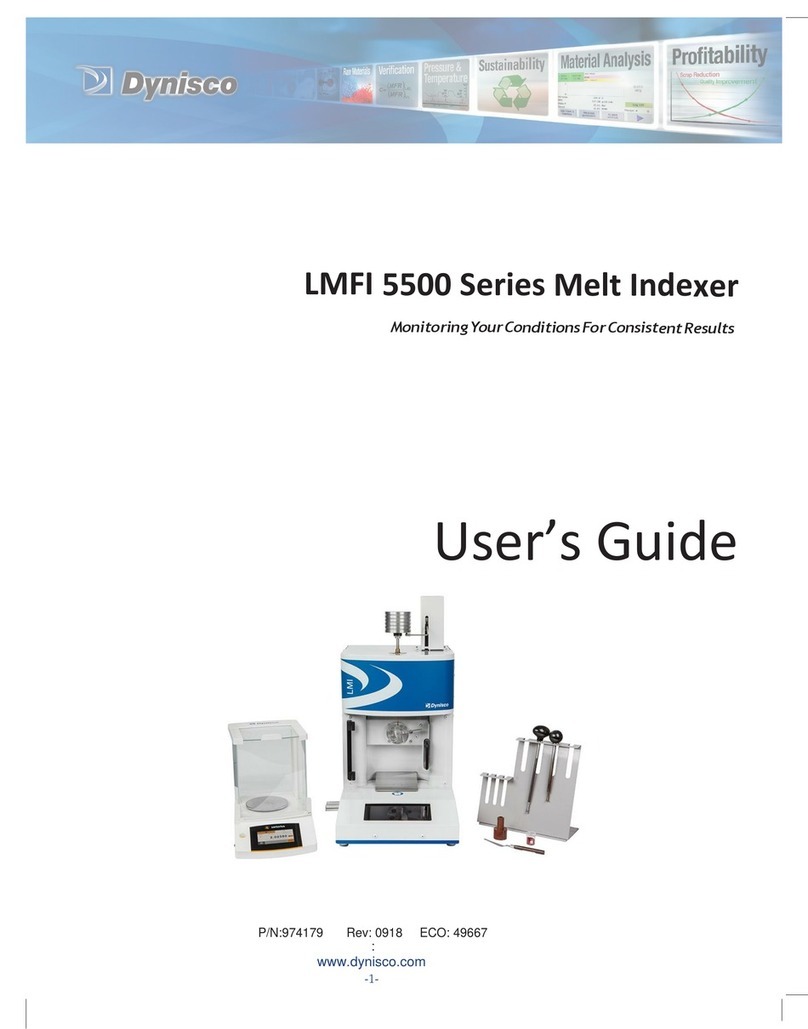
P/N: 974175 | Rev: 092019 | ECO: 50719
www.dynisco.com
The optional stand has flexible configuration capability. It is possible to configure it is such a way that it
is unstable. Take care not to use it this way unless it is properly secured.
Take care to avoid tipping the stand due to an impact (from something/somebody running into the stand),
or from a collision (a forklift or crane load, etc being driven into it), or while moving the stand. Do not
climb on or support yourself with this stand. Use signs or barriers as appropriate.
When moving the stand around on its castors, there is danger that it could suddenly stop sharply when it
rolls over uneven floor surfaces or other obstructions (screws, granules), and could tip. Appropriate
caution must therefore be taken - roll the unit slowly!
The castors on the base of the stand must be examined regularly for damage and secure fit, damaged
castors are to be replaced immediately.
1.2 Obligation of the operator to exercise due care
The Dynisco component conforms to the state of the art technology and ensures a maximum of safety. In
practical operation, this safety can, however, be achieved only if all necessary measures are taken. The
obligation of the plant operator to exercise due care includes planning these measures and supervising
their execution.
Especially, the operator has to ensure that:
The Dynisco component will be used only in accordance with the intended purpose.
The Dynisco component will be operated in a flawless, functionally efficient condition and that, in
particular, the functional efficiency of the safety devices will be checked at regular intervals.
The necessary personal protective equipment for the operating, maintenance, and service personnel
will be available and used by them.
The operating instructions are always available completely and fully legibly at the installation
location of the Dynisco component. It must be guaranteed that all persons who have to work with
the Dynisco component can consult the operating instructions at any time.
Only sufficiently qualified and authorized personnel will operate, maintain, and repair the Dynisco
component.
Instructions concerning all relevant questions of industrial safety and environmental protection will
regularly be given to the personnel, and that these persons will know and understand the
operating instructions and, particularly, the safety instructions contained.
All safety and warning instructions, attached to the Dynisco component, will not be removed and will
remain fully legible.
The service instructions in accordance with the industrial safety legislation and the ordinance for the
use of work materials will have to be made available as a supplement to the operating
instructions.





























